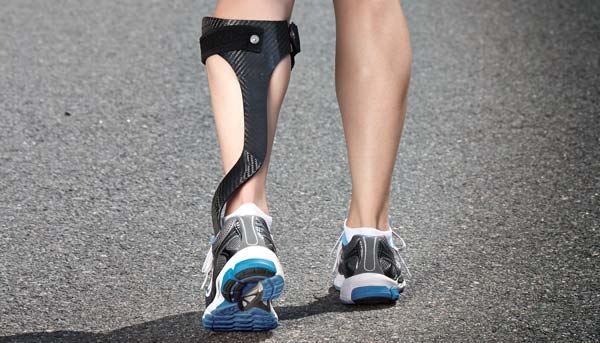What Are Ankle/Foot Orthotics?
Orthotics is a medical field concerned with the design, manufacture and use of aids used to support weak limbs or direct the proper function of limbs, in this case the foot and ankle. Ankle-foot orthotics, or AFOs, are braces worn at the ankle that encompass some or all of the foot. Diseases that affect the musculature or weaken the affected area require AFOs to strengthen the muscles or train in the proper direction. Tight muscles that need to be lengthened and loosened also benefit from AFOs.
When we think of diseases that affect the musculature we think of the big boys: muscular dystrophy, cerebral palsy, polio and multiple sclerosis. We rarely think that arthritis and stroke can affect the musculature or that there are some who "toe in". But whatever trauma affects that musculature, there is a way to correct it. The orthosis helps to control range of motion, provide support by stabilizing walk, correct deformities and manage pain load. A podiatrist would be consulted for those who "toe in", for instance, or an arthritis sufferer whose ankles suffer through walking on the job or perhaps a victim of stroke whose musculature is wasting away and requires strength.
Before the advent of modern orthotic devices, it wasn’t uncommon to see polio victims wearing metal braces from mid thigh to the bottom of the foot, or children who "toed in" wearing metal braces around their ankle and foot. However, both designs and materials have improved dramatically, allowing for new levels of comfort, functionality, and appearance. Many orthotics are now made from plastics in the shape of an L and designed to fit inside a corrective shoe. These can be rigid, buckling at the calf and extending the length of the foot to support the ankle. This same design except with a hinged ankle provides support while walking by normalizing the gait. In the past boots lined with leather and fiberboard provided the rigidity needed for correction and support. Now corrective shoes are available with built up soles to correct the gait or manage pain by sharing it with another area when the foot spreads during walking.
The podiatrist would prescribe this orthosis in the rigid L shape because the foot moves on a hinge. If the hinge isn't functioning as intended due to an injury or malformation, the muscles tighten up, thus making it difficult to flex the foot. When we walk, the foot flexes and muscles stretch. This brace or AFO would support the ankle and musculature during flexion of the foot, in much the same way a knee brace works. Corrective shoes are for people whose feet hit the ground backward, causing tight muscles and arch problems. Wedges and rocker bars on the heels correct the step to heel first and rock onto the ball of the foot, resulting in relaxed musculature and strengthened ankles.
Appearance also counts when we consider a particular support device, especially if the item is intended for regular, daily wear. The L shaped orthotic is contoured to the calf and flesh-colored, fitting into a sneaker or dress shoe. As present, corrective shoes are more attractive than past models, enabling patients wear such devices with greater comfort and confidence.
Contact James C. Ricketti, DPM and let us address all your foot and ankle needs. Our board-certified podiatrist will tailor treatments based on your individual needs and with our state-of-the-art diagnostic and treatment options, we’ll help you get back on your feet in no time! Call our office today at 609-587-1674 to make an appointment at our conveniently located Hamilton, NJ office.
